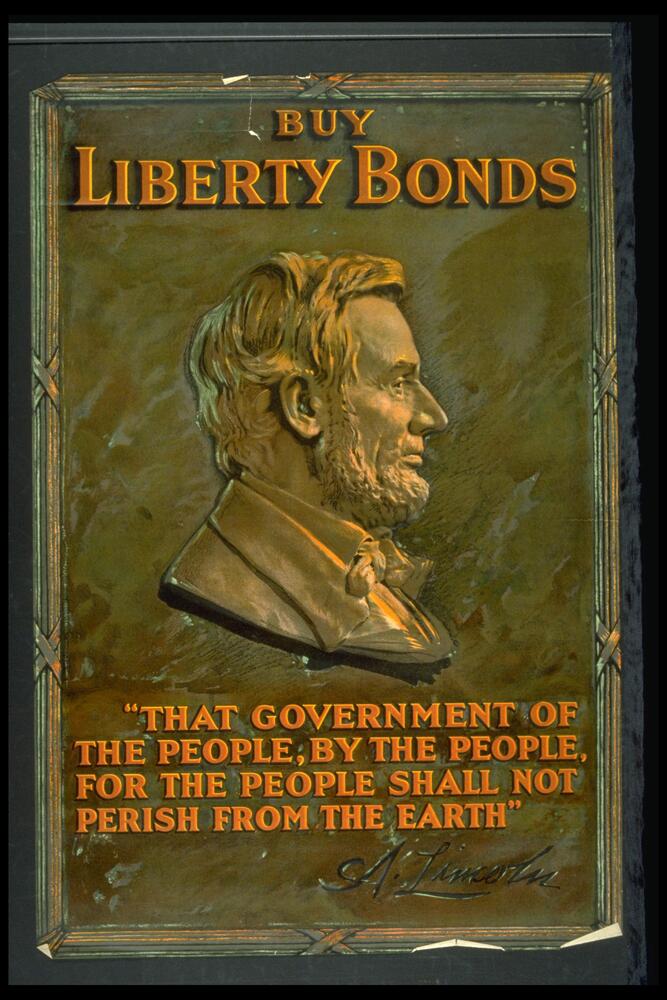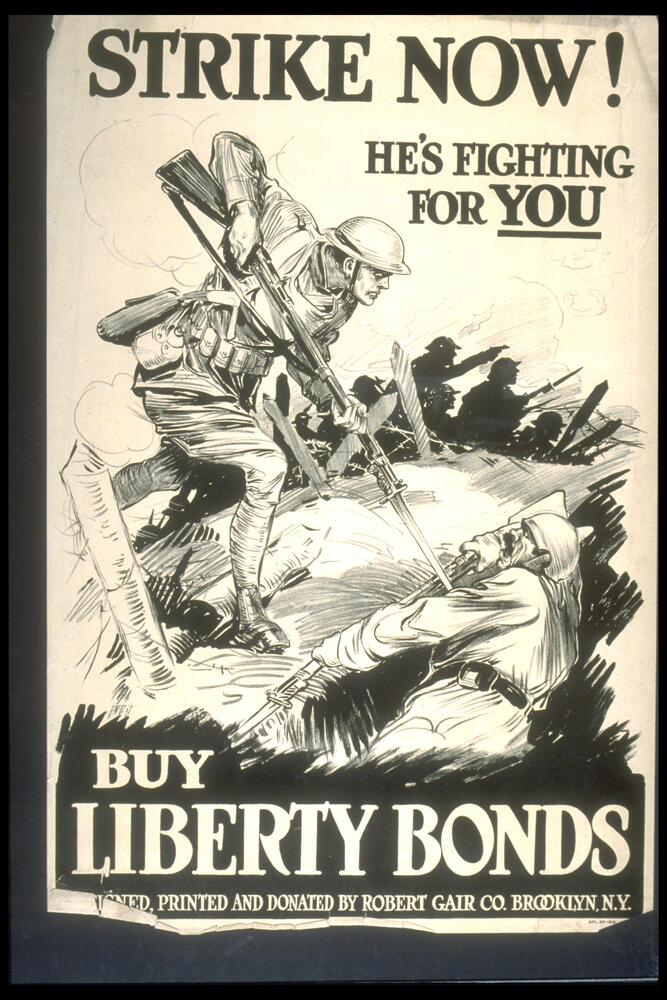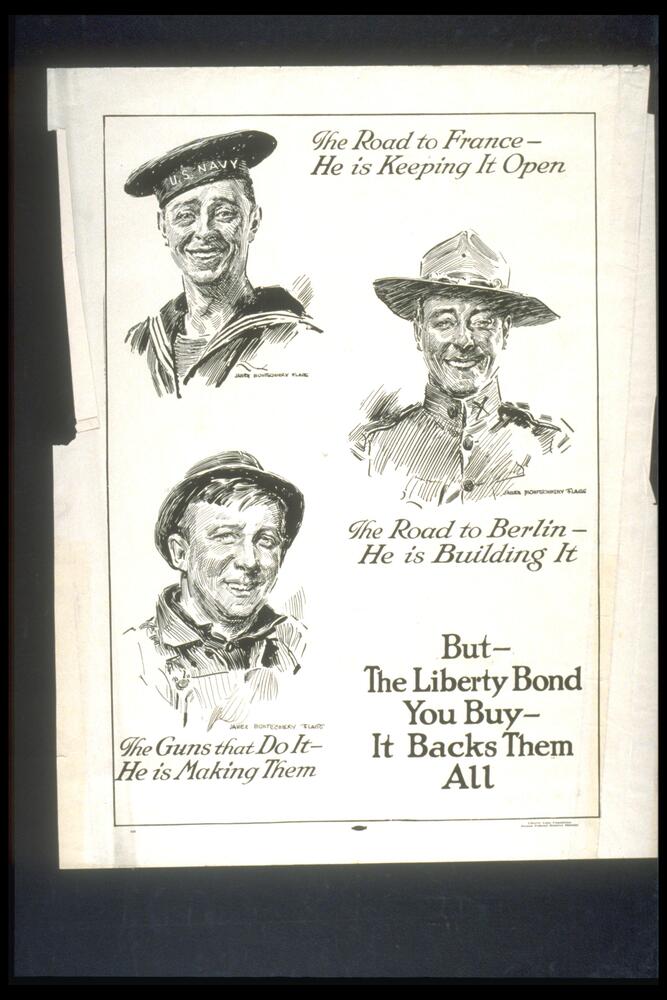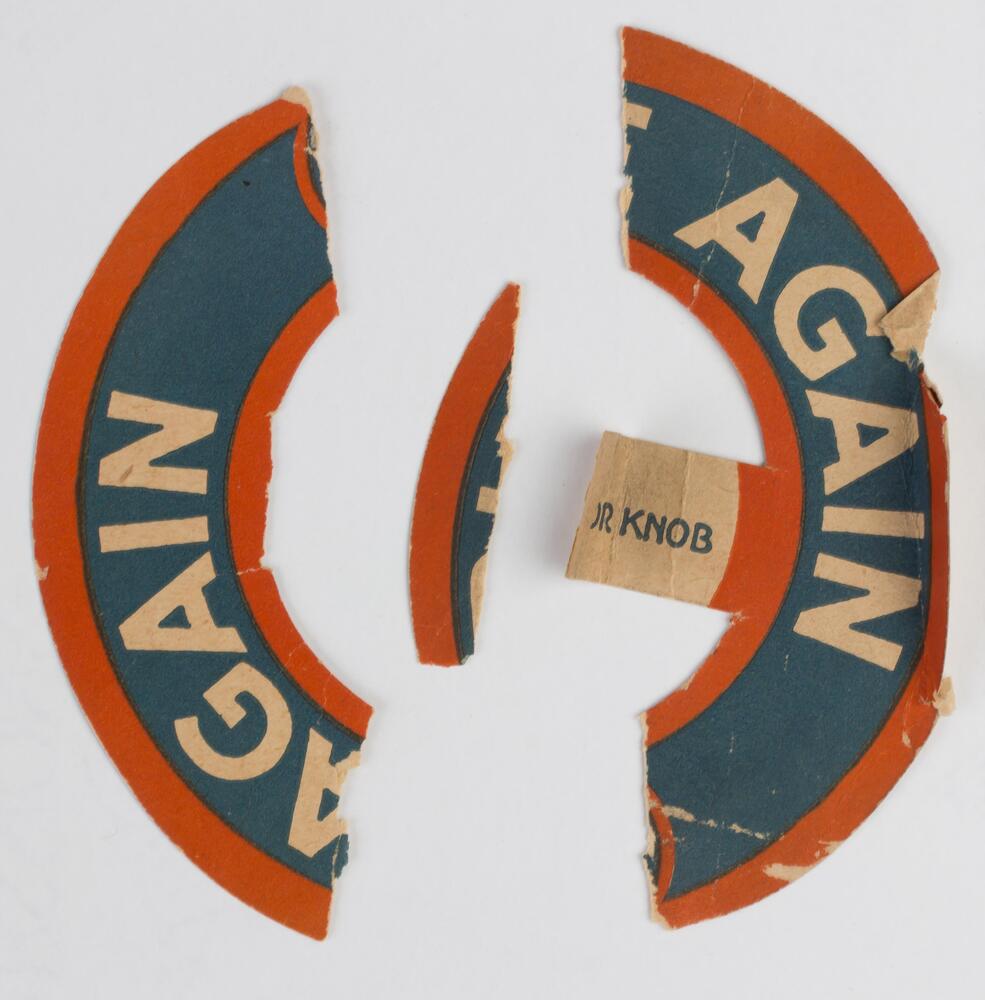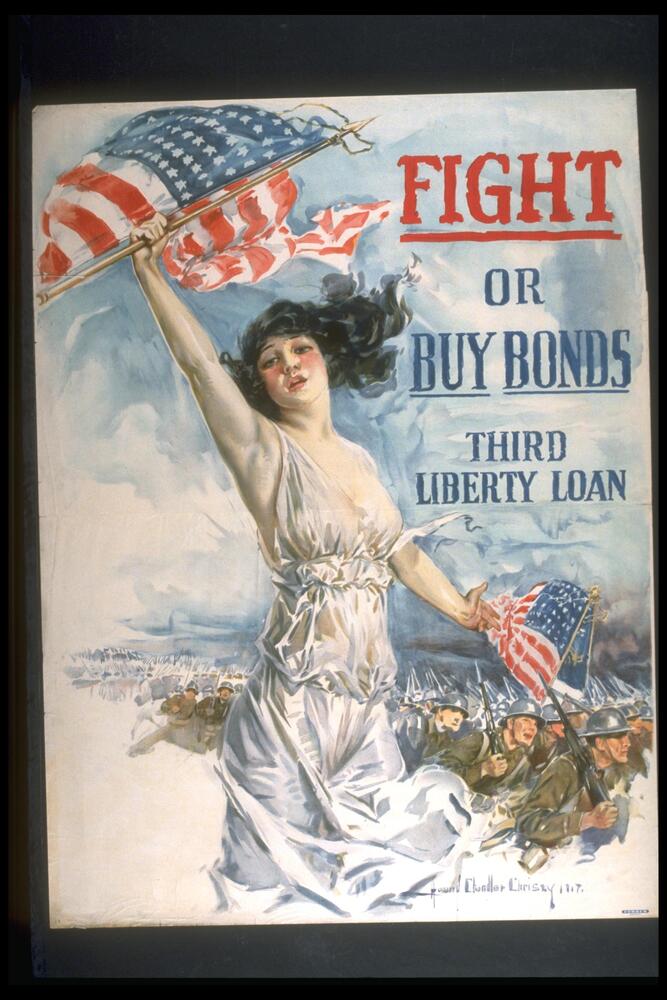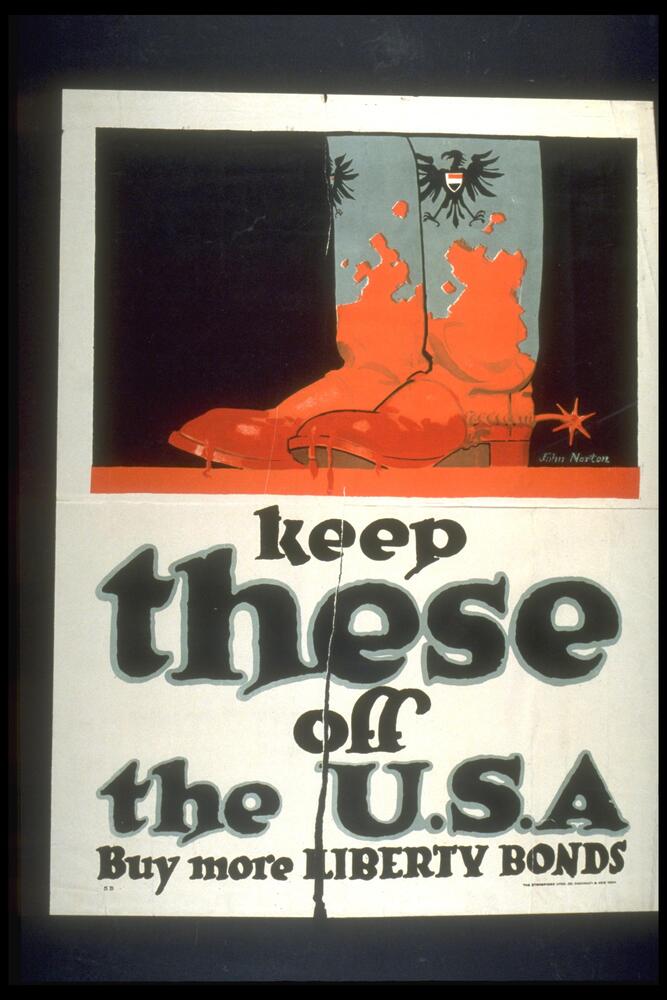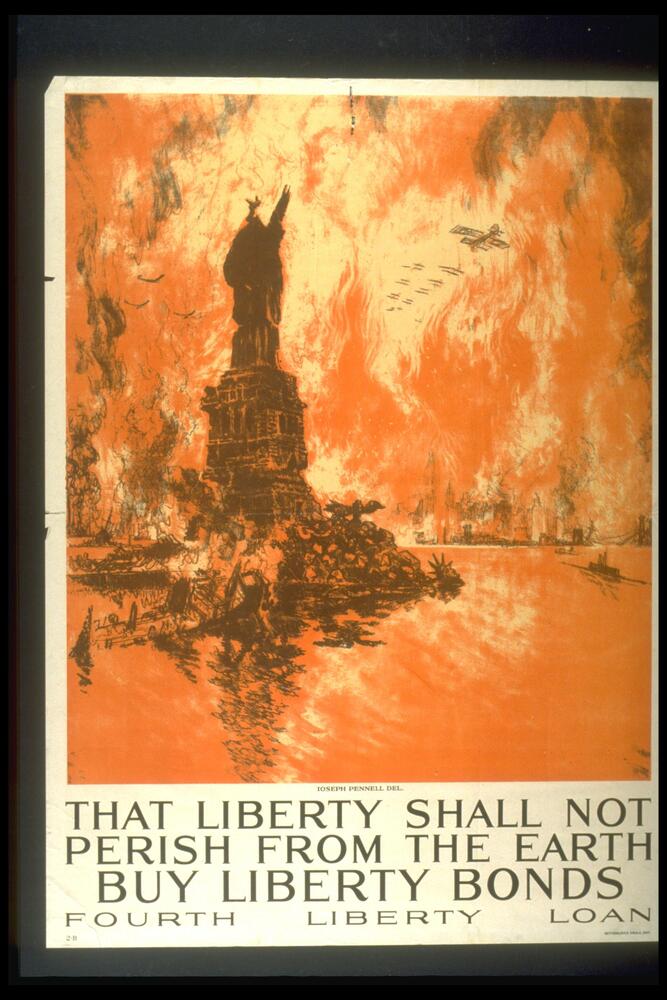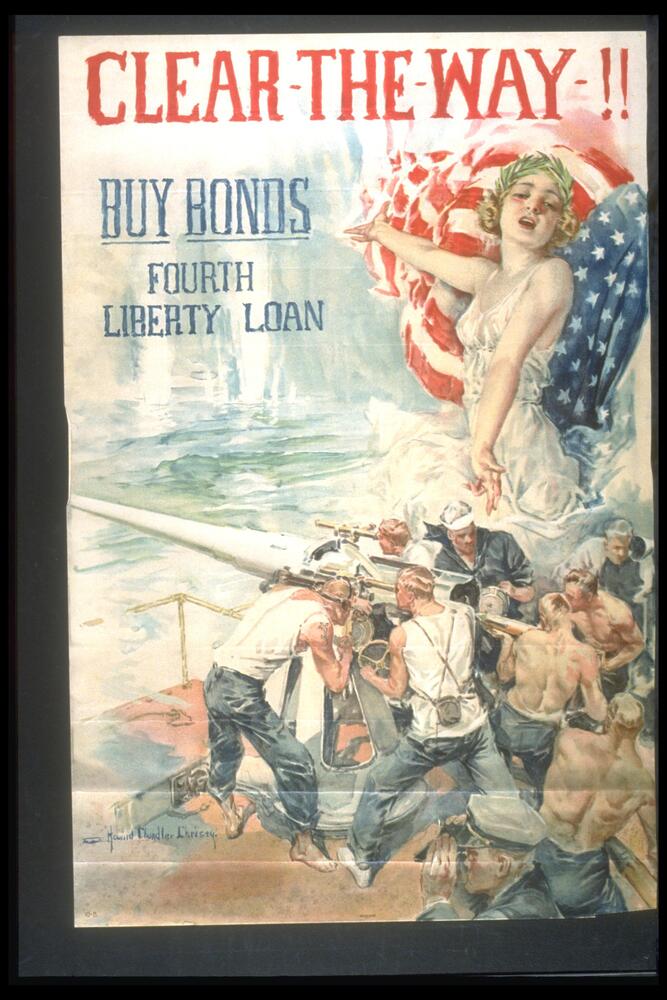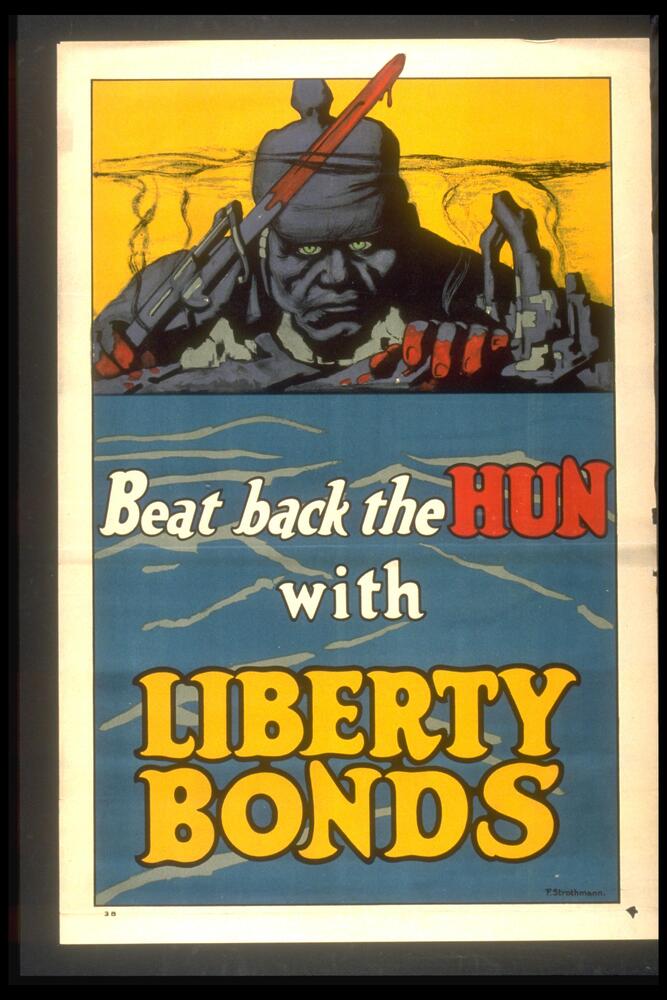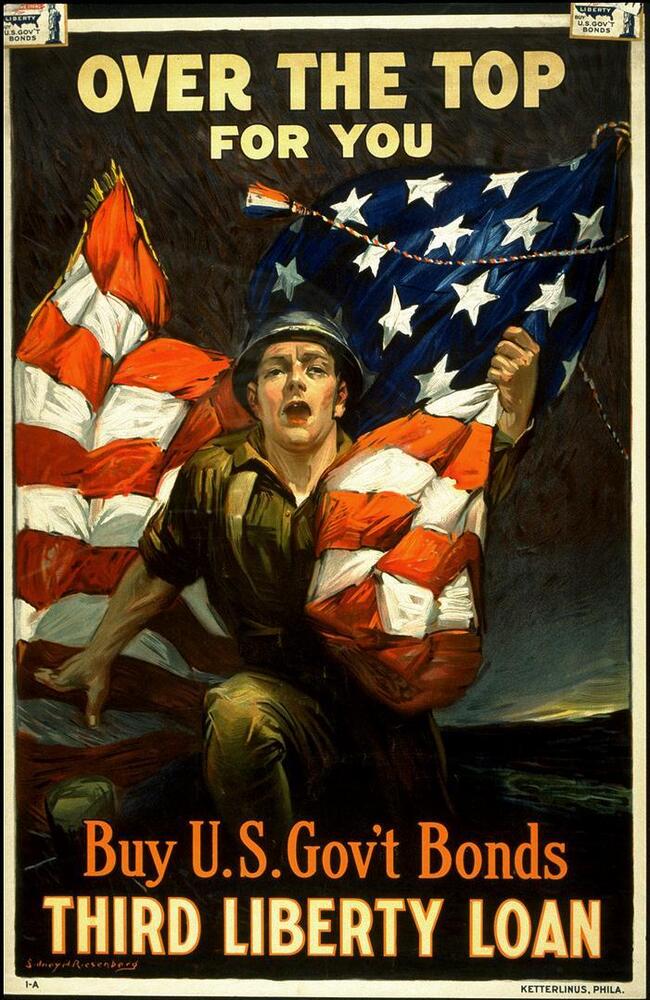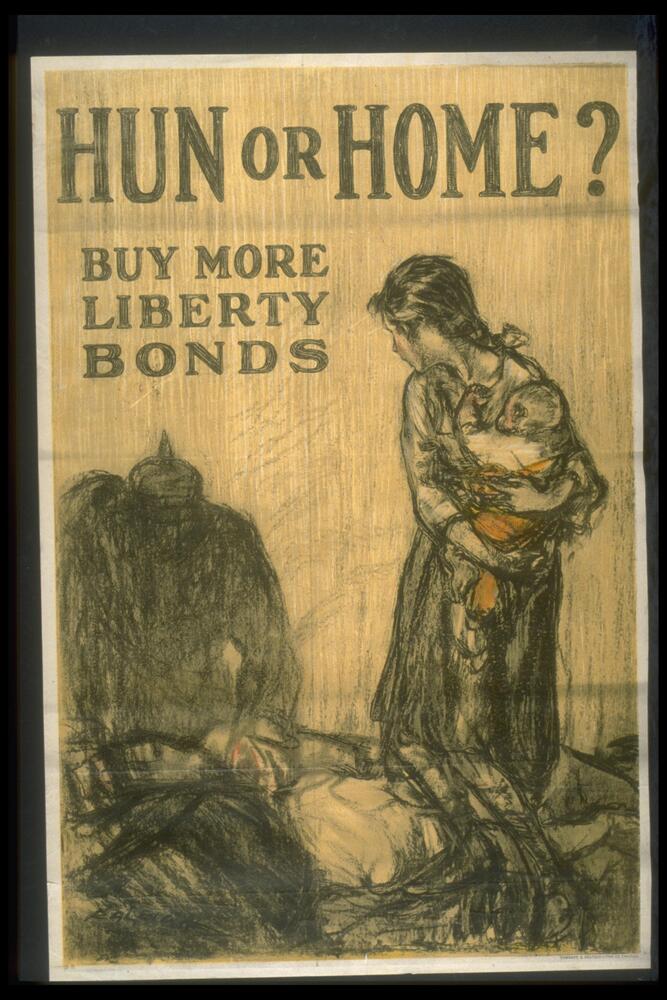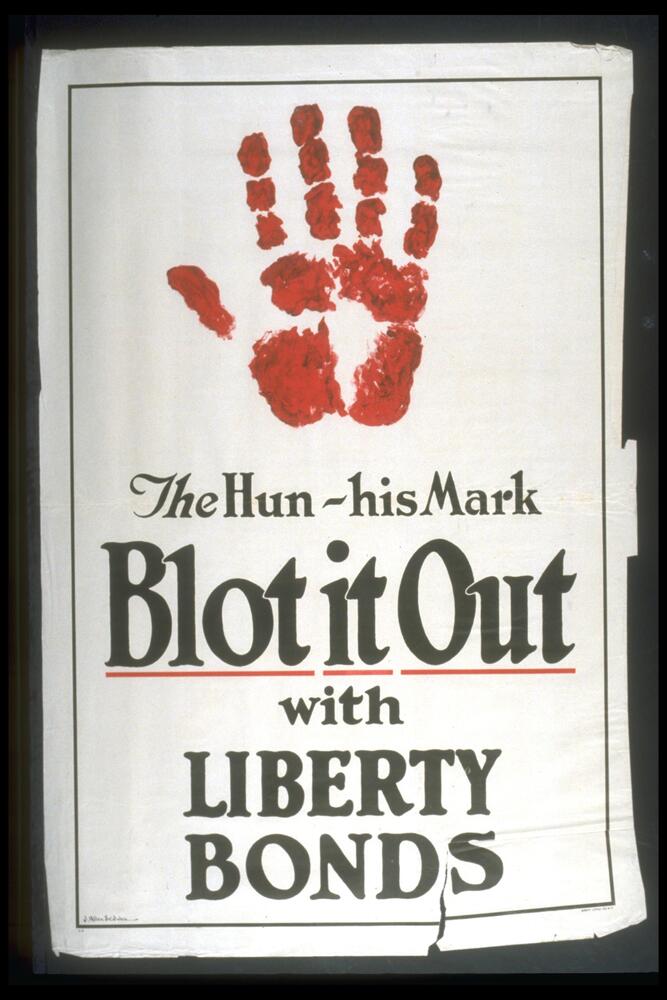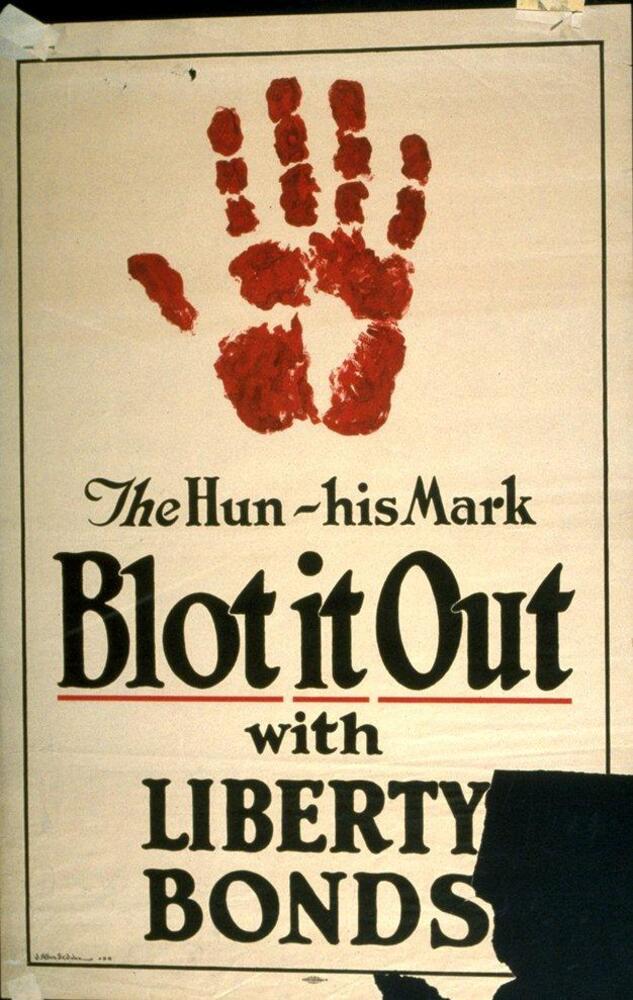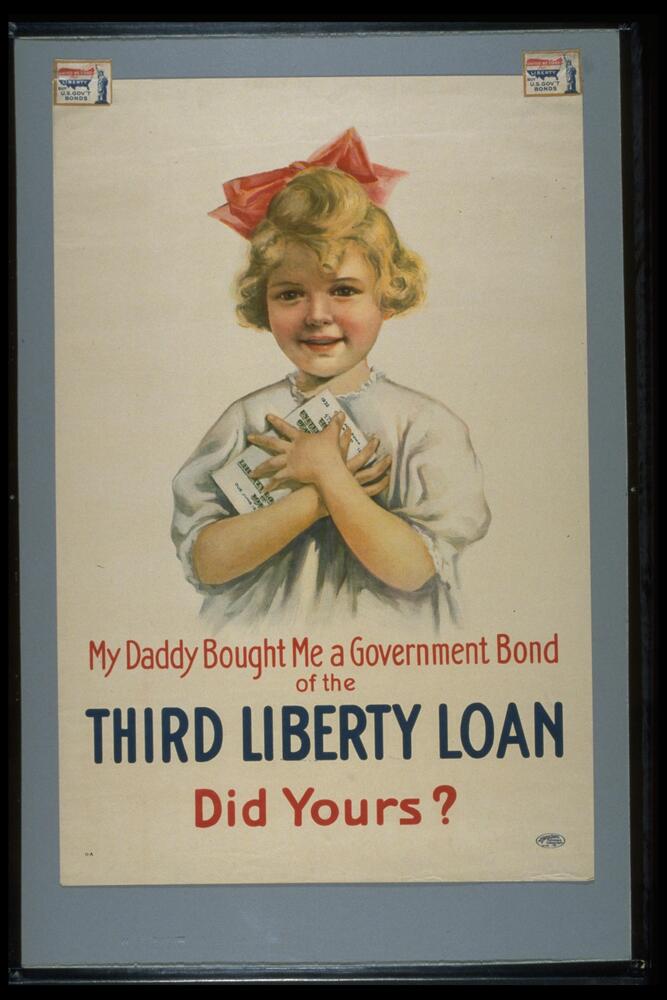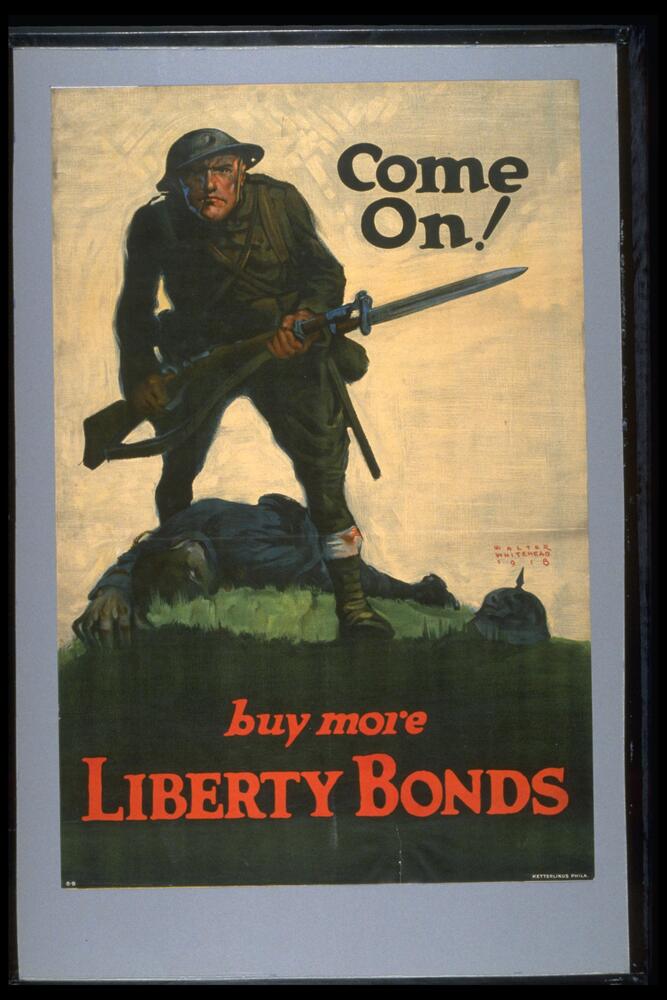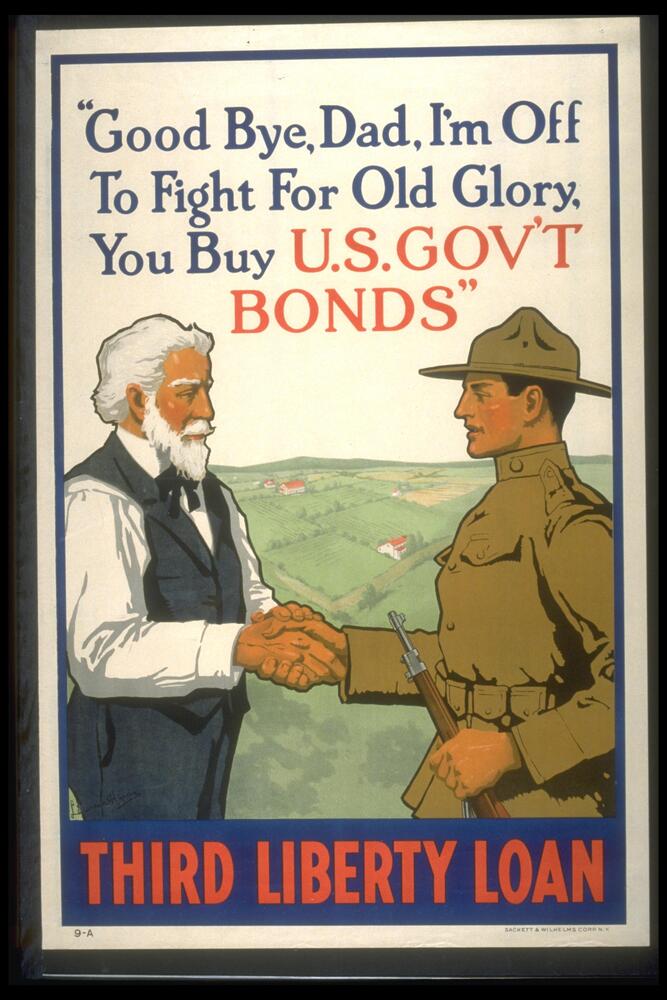World War I Liberty Bonds Sales
The World War 1 poster project was a massive campaign that targeted local communities to aid in supporting the war effort in Europe. These posters ranged from encouraging young men to enlist, to food conservation techniques, to the sale of liberty bonds. This massive publicity campaign was designed to be patriotic in theme as to appeal to people's sense of duty. What were originally known as "War Bonds" were changed to be known as "Liberty Bonds" to add to their patriotic notion. Other techniques included invoking great American men such as Abraham Lincoln or simply asking questions like, "Are you 100% American?"
Upon the United States entering World War 1 in 1917, the need to fund the war without inflating its currency became paramount. war bonds, or as they were called in the US, liberty bonds, were used as a way of managing inflation and stabilizing the economy at times of uncertainty. A person could invest in the United States government buy purchasing a war bond and then cash it in with some amount of interest after the war to promote spending.
While not hugely successful, these posters promoting Liberty Bonds do offer a glimpse into American ideals in the early 20th Century. Themes of masculinity and femininity are common. Similar to the United States government's use of Greek and Roman architecture for its buildings, these posters often depict its figures in ways similar to that of the sculptures of classical antiquity. The male soldier is drawn as a muscular hero fighting on the front line like a Greek hero. The female in contrast, is depicted with extreme femininity and as a caricature of "Lady Liberty." Both posters in this resource by Howard Chandler Christy follow this formula as the pale and elegant "Lady Liberty" holds the American flag with a face full of emotion as if she herself was begging the people to purchase a war bonds in order to save the male troops she watches over. In both instances her figure is reminiscent of Greek and Roman sculptures of Aphrodite and Athena and she even wears a Greek style dress. While not every poster is explicitly based off classical antiquity, these themes of masculinity and femininity are prevalent. The woman is repeatedly used to evoke an emotional response from the viewer while the male is there to represent those fighting on the front line and their sacrifice.
1 Link
Tags
EconomyEurope
Liberty
Liberty bonds
U.s. culture
U.s. history
United states
War
War bonds
War effort
World war 1
Created For
K-12 EducatorK-12 Student
Museum Visitor
UMMA Docent
UMMA Staff
University Faculty
University Student
Rate this Resource
AVG: 0 | Ratings: 0
& Author Notes
All Rights ReservedLast Updated
May 24, 2018 1:27 p.m.Report
Reporting Policy

